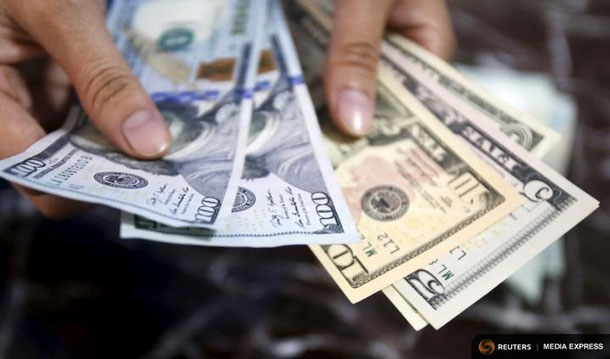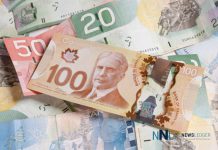
LONDON (Reuters) – The last thing the world needs right now is a stronger dollar but that’s exactly what it looks like getting.
A rise in the greenback of nearly 20 percent since summer last year is hurting U.S. exports and slashing corporate earnings there, undermining the world’s biggest economy and one of its twin engines of growth.
In the other, emerging markets, it has contributed to a collapse in commodity prices that has caused economies to stall or shrink while inflating countries’ dollar debt burdens.
Even the Federal Reserve is worried, citing the exchange rate effect on the economy as a factor in its decision last month to delay “lift off” on raising U.S. interest rates. It may play a central role in the Fed’s deliberations this week too.
But as talk of currency wars revives, a weaker dollar is hard to envisage as European and Japanese authorities worried about the effect of their own economies of a rising euro and yen will fight hard to prevent it.
The consensus view among currency market analysts is that the dollar will rise against major crosses over the coming year.
RECESSION BUSTER
Willem Buiter, chief economist at Citi and a former Bank of England policymaker, says a weaker dollar could help prevent the world economy slipping into a new recession or a prolonged period in which actual growth is far below its potential level.
“The global economy would be helped by faster growth in the United States,” he said. “If that’s brought about by a combined monetary and fiscal stimulus, and done the right way, that would help boost an important source of demand in the world economy.”
That would preclude a depreciation for worrying reasons like a loss of investor confidence in the United States.
With the U.S. economy accounting for a quarter of global output, and the IMF estimating emerging markets will contribute more than 70 percent of global growth in the decade to 2020, a weaker dollar could have a powerful stimulative effect.
Research from economists at Deutsche Bank shows that net exports will exert a drag of about 0.7 percentage points on U.S. growth this year, up from the 0.5 they anticipated in January.
The stronger dollar accounts for about 0.5 percentage points of this drag, a phenomenon that will persist beyond this year and peak in the early part of 2016, Deutsche said.
And research by JP Morgan economists into previous episodes where emerging market borrowing has soared shows that growth in these countries always suffers when the debt bubble — largely a dollar-borrowing one — deflates.
They conclude that emerging market GDP growth could slow to an average of 2.6 percent in the coming three years from around 5.5 percent over the last five years.
$2 TRILLION DRAG
The effects of dollar strength are already deep and far-reaching.
From IBM <IBM.N> to Wal-Mart <WMT.N>, the earnings season has shown that the strong dollar is choking corporate America’s profitability. S&P 500 companies’ profits are expected to fall almost 4 percent in the quarter.
Emerging market banks and companies that have borrowed huge amounts in dollars are also vulnerable to a stronger greenback.
According to Charlie Robertson at Renaissance Capital, international debt issuance from emerging markets quadrupled in the last 10 years to $2 trillion (1 trillion pounds). Most of that is in dollars.
“A weaker dollar is strongly positive for emerging markets because their external debt burden becomes more manageable and commodity prices tend to do better,” he said.
The emerging markets slowdown is well underway. In January, the World Bank expected developing economies to expand 4.8 percent this year but it downgraded that assessment in June to 4.4 percent, citing the dollar as one of its reasons.
While the Fed is mulling when to raise interest rates, European Central Bank president Mario Draghi last week gave a clear nod to further stimulus coming soon and China’s central bank cut interest rates for the sixth time in less than a year.
Barring a coordinated global pact along the lines of past G7 agreements and joint intervention episodes, it is unclear how a weaker dollar could be engineered, as virtually all the players involved would want their own currencies to weaken.
The Fed could state it will not raise rates for a long time — essentially a return to “forward guidance” — which would put the dollar on the defensive. But Fed policymakers are unlikely to do this when they’ve come so close to raising rates.
David Bloom, head of FX strategy at HSBC, argues that too much weight is being put on the dollar and that governments, central banks, businesses and consumers will determine global growth trends.
“The bottom line is: currencies cannot save the world. End of,” said Bloom, whose anti-consensus call is for the euro to rise to $1.20 next year.
(Editing by Catherine Evans)






